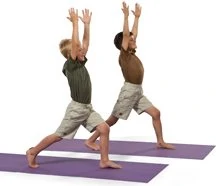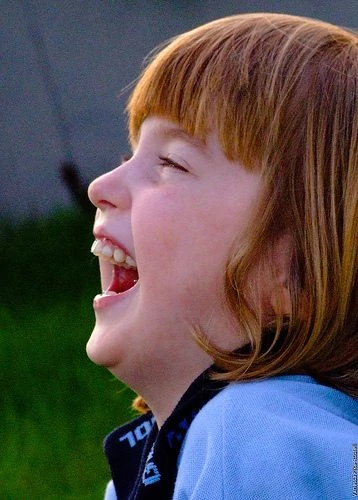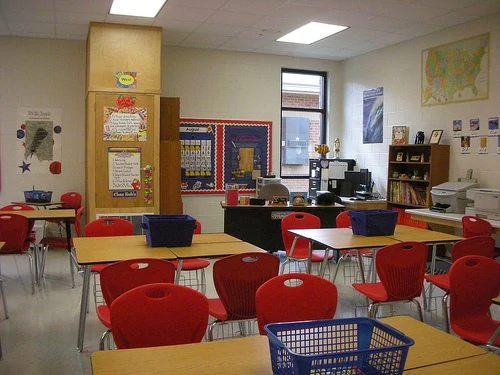Recently, Good Morning America ran a segment on how – and why – more doctors are recommending yoga for young patients. One situation in which yoga is increasingly recommended is for children diagnosed with ADHD, as it is well recognized that yoga-based activities of all kinds can be extremely effective in helping kids learn how to focus and self-regulate.
We see this efficacy regularly in our work with children – Lynea’s at the school where she is a counselor, and our work together in conducting children’s classes at a clinic. And because so many other teachers, counselors, occupational therapists and other adults who work with children are regularly faced with the special challenges of working with kids diagnosed with ADD/ADHD, we found it beneficial to create special Yoga Calm trainings focused on ways of meeting those challenges. (Parents, of course, find these workshops invaluable, as well!)
Our course, entitled ADHD: Mind/Body Connection course with Jeffrey Sosne, PhD, a clinical Psychologist and Director of The Children’s Program, is just one example. Widely recognized as one of Portland, Oregon’s leading authorities on ADHD, Jeff is the author of two practical guides for parents and school personnel: The ADHD Notebook and The Anger Notebook. Together, we cover Dr. Sosne’s strategies and games for working with ADHD and show how Yoga Calm activities – both the physical yoga and the social/emotional games – can be used to help nurture self-control and focus in kids for whom such things have been difficult.
5 Tips for Teaching Kids with ADHD:
1. Practice Making Eye Contact
Eye contact helps children show that they are interested and paying attention. A lack of eye contact leads to “divided attention,” which makes it harder to focus and follow directions.
To practice “shifting” attention, introduce activities in which the children must switch between two (or more) adults giving signals or eye contact for directions (e.g., Steal the Bacon). Also, parents can get closer to their children when they are talking or giving directions, and stop speaking if their kids aren’t maintaining eye contact. If necessary, parents can schedule time to practice eye contact by having their child watch them as they move about the room while reading a story to their youngster. As the child improves, he or she can practice while learning to look away from distractions strategically placed in the room.
2. Model and Instill a Can-Do Attitude
In workshops, we use different games (e.g., Jenga) and positive self talk (e.g., “I am in control,” “I can do it,” “I can be responsible.”) to illustrate how a positive attitude improves performance and how helpful it is to decide what you can do instead of what can’t be done.
At home, parents can encourage their children to decide what they can do to help before dinner or what they can clean up before going to a movie. We will not respect tasks that are accomplished with a negative attitude, and we value accomplishment of reasonable goals that have been set by the child more than tasks that we have defined and the children have reluctantly completed. Positive self-talk should also be encouraged, leading children to focus on their strengths and accomplishments, nurturing a sense of self-mastery.
3. Practice Listening and Giving Feedback
There are lots of games you can play with children that require them to listen and to give feedback in a calm, clear manner. For instance, in workshops, we may play Hot and Cold, in which players give each other feedback about finding a hidden object. To find the object, of course, the child who is searching for it must listen, evaluate and respond to the feedback given, while those giving the feedback must do so clearly.
You can build opportunities for reflection into any game or activity, and, of course, give compliments after activities done well. In group situations, Yoga Calm’s Compliment Game can be an especially fun and effective way of learning how to give and receive praise. And it provides another opportunity to reinforce the importance of eye contact!
4. Practice Stillness
There are many activities in life that require staying in control and not going too fast. To teach this, you can have children participate in several activities that create a bit of excitement and then challenge the kids to stay calm and go slowly to be successful.
The Yoga Calm Mat Tag activity can provide just such a challenge. When any of the children get too excited or out of control, simply ask them to sit down. Once they have shown they can calm down, they may re-join the activity. During any activity, if a high level of chaos or excitement is reached, just stop until everyone is calm, or remind the children to say something to themselves like, “Go slow, easy, easy,” to help them think about staying calm.
5. Encourage Setting Goals and Making Plans
A goal is something we want to work toward, while a plan is the strategy used to get to the goal. For this concept, we will do some activities several times to work on adding parts to a plan to lead to a more accomplished goal. For example, we may ask students to do a number of increasingly difficult tasks involving tapping a balloon in the air: using just one finger, using only the feet, behind the back and so on. Because the tasks become more difficult, we stop after a child cannot complete the challenge and come up with plans that could help make reaching that goal easier. The children realize that sometimes they needed several points in their plan to be able to reach their goal.
Parents can work with their children at home on the idea of setting a goal and coming up with a plan to reach it. We suggest making a chart with a diagram of a sun with many rays coming off it. Inside the sun, write the goal; in the rays, parts of the plan that will be followed in reaching that goal.
To learn more about helping children with ADHD:
-
- Watch this YouTube clip of Dr. Sosne: ADHD and the Attentive Mind
- Buy and watch Dr. Sosne’s ADHD DVD
- Take Wellness 1: Intro to Yoga Calm
- Have your child attend a Yoga Calm class






Trackbacks/Pingbacks